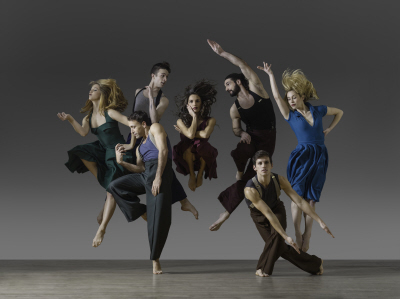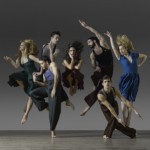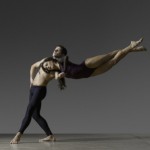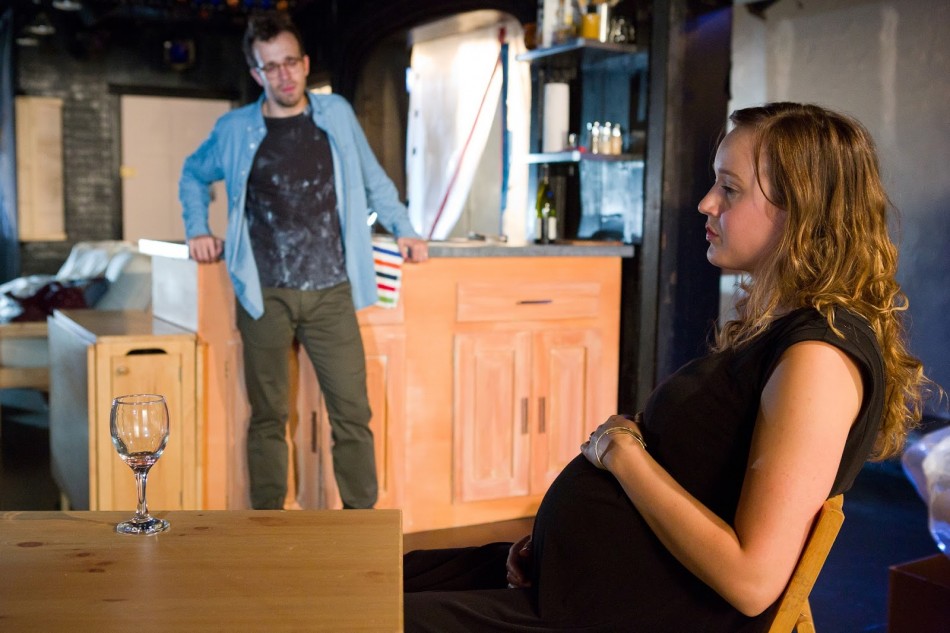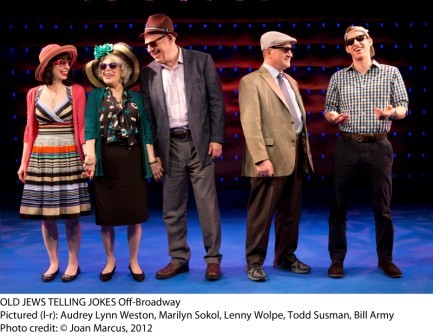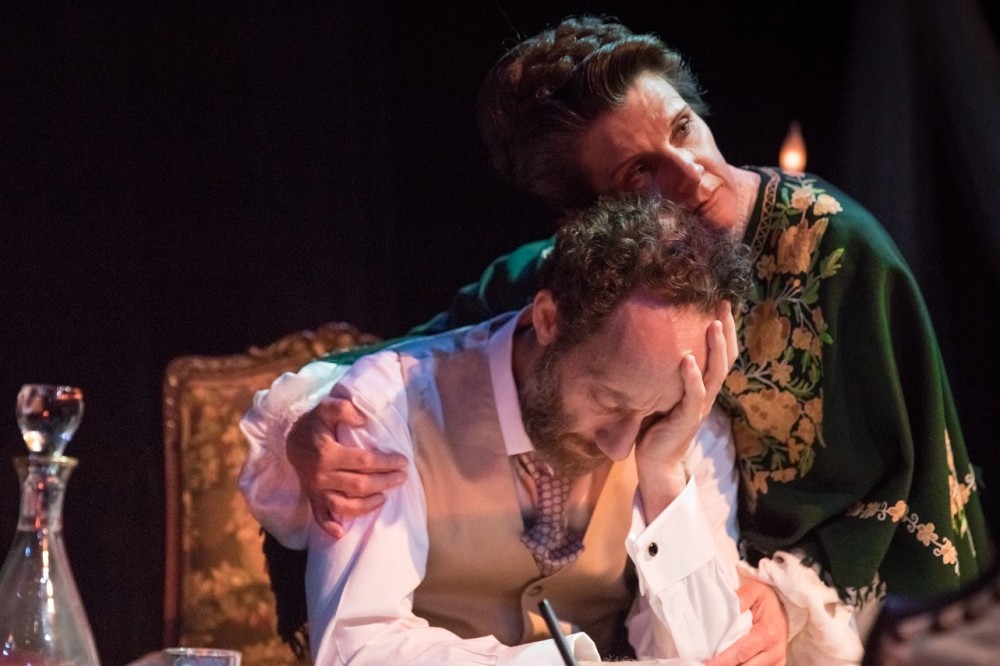By Joel Benjamin
Parsons’ “Bachiana” positively basks in the influence of his mentor Paul Taylor, in whose company he danced for a number of years. In Bachiana, eight of Mr. Parsons’ dancers, dressed in David C. Woolard’s simple red and black outfits, whirled, circled, lifted and twirled each other to the bright Bach tunes. The standout was an intense “Air on a G String,” a lovely duet featuring soft-edged, floating lifts. There was even a momentary hint of the four Cygnets from Swan Lake in the final section. “Bachiana” was an example of fairly early Parsons and was witty, musical and beautifully danced.
Even older was “Caught,” the 1982 solo set to an electronic, whining score by Robert Fripp in which a dancer—here, Ian Spring—times his jumps to a strobe light making him seem to float across the stage. It’s a slight, virtuoso tour de force which has become as indispensable to Parsons Dance as “Revelations” is to the Ailey troupe.
Speaking of Ailey, this program (one of two) featured a work by Robert Battle, that troupe’s new artistic director, “Train” to a score by Pankaj Udhas. Sarah Braverman, Christina Ilisije, Ian Spring, Elena D’Amario, Geena Pacareu and Eoghan Dillon performed this hard-driving, ritualistic ballet. Thumping drums propelled the six dancers. The movements were flung off simple formations and featured arms flung, upper body isolations and lots of glaring. A painful lighting change should be reconsidered. There’s no need to blind your audience.
Clearly Mr. Parsons is trying for more diversity in his repertoire, for artistic reasons and to keep his dancers well-rounded. In addition to Mr. Battle there was one work each from Trey McIntyre and GenerationNOW Choreography Fellow Natalie Lomonte.
Mr. McIntyre’s two-hander “Hymn” to a distorted jazzy score by CocoRosie can be danced by either a male or female same-sex couple was here performed by Sarah Braverman and Elena D’Amario looking like tough cookies stomping and flexing. It wasn’t clear whether the two were supposed to be romantically involved, although an occasional embrace muddied things up. The two women danced with an intensity that showed every aspect of Mr. McIntyre’s steps.
Ms. Lomonte’s “Within” was staged to three numbers sung by the brilliant Nina Simone. Unfortunately, the choreography never matched Ms. Simone’s rich interpretations, although a long solo to “The Other Woman” showed that Ms. Lomonte can handle emotions made visible through movement. “Within” felt somehow unfinished, but promising.
The program ended with a Parsons YC premiere “Whirlaway” to folksy pop songs by Allen Toussaint. This jaunty, but extremely light work, costumed in chic street wear by Keiko Voltaire, put the dancers through their paces, bouncing around the stage, strutting, making friends all using movements that uneasily melded modern dance and popular dance forms. The wham-bang rhythms and zooming around made the choreography seem deeper than it was. What Mr. Parsons did create was a funny, easy-on-the-eye popular work that appeals to both the dancers and the audience and there’s nothing wrong with that.
*Photos: Lois Greenfield
Parsons Dance
January 21 – February 1, 2015
The Joyce Theater
175 Eighth Ave. at 19th Street
New York, NY
Tickets: JoyceCharge 212-242-0800 or www.joyce.org
More Information: www.parsonsdance.org


